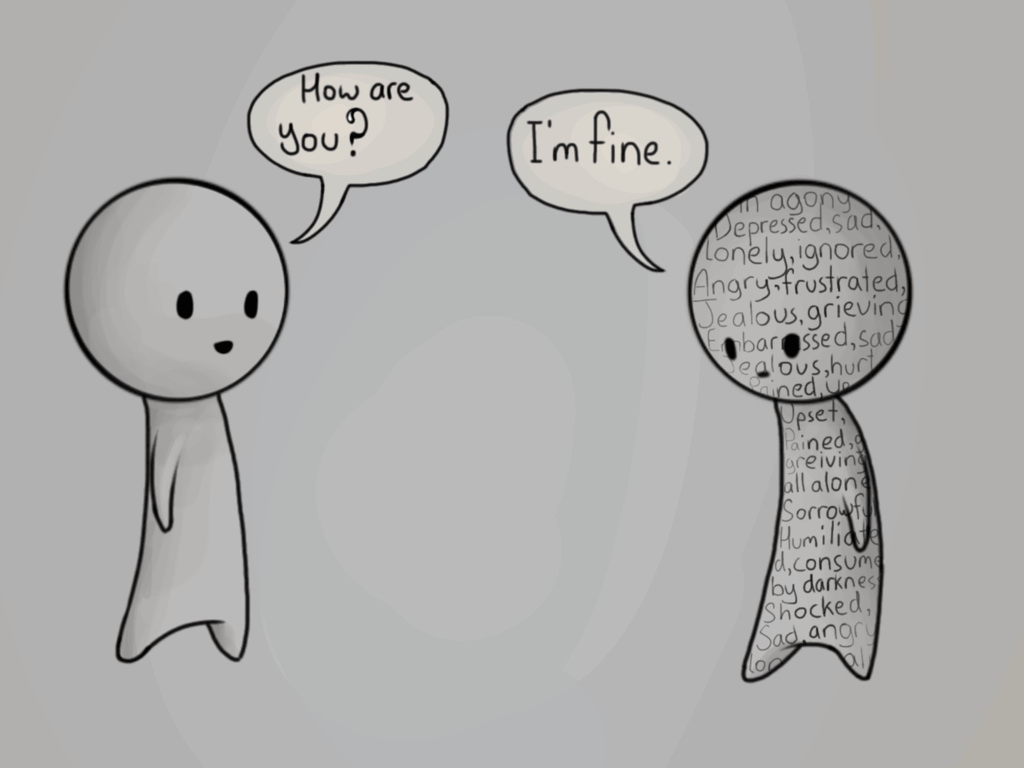How many times did you ask your child:
“How are you? How was school?” and received the same answer, over and over:
I am fine.
I am OK.
It was good.
Eventually, we give up, right? We get to a point of not expecting a “better” answer. We settle for the one- word with no true meaning type of answer, as if this is how things are between children and parents since the beginning of time. It becomes “normal”.
Here’s the catch, though: most adults whom I talk to – when I ask them:
How are you feeling right now?
What’s going on in your body at this moment?
Invariably answer:
I am fine.
I am OK.
Nothing.
I feel nothing in my body.
Am I supposed to feel something in my body?
My body is just fine.
This word: FINE. It shows up everywhere; it’s on the tip of our tongues…when safety and honesty are lacking in the relationship, at that moment.
“I AM FINE” is like a cheap second-hand winter jacket but we pretend it’s ‘vintage’; and because we pretend, the other person pretends as well. After a while, the relationship becomes a theater-like play with two actors who can’t remember how they got here. It feels empty.
Why is this relevant in CONSCIOUS PARENTING?
Because children become what we model to them, and for them. They model our language, and how we interact with the other parent and/ or other adults in the house.
Homework and Practices that will make a difference, over time, if used with consistency:
- Look online for a good list of human emotions and states of mind. I like this one (click here) but you can find your own.
- Print this list and have it somewhere visible where you can see it daily.
- Notice yourself how you answer (by default) when your child or partner asks you how you feel. Just notice. No self-judgement.
- Do your best to give an honest answer of how you really feel at that moment. See what happens for you, and for the other person, when you give an honest answer. (NOTE: if your child is young, please use your judgement and do not “dump” your raw emotions on the child. You can say something like: I might need 5 minutes of quiet time to listen to my body for a little bit… I am right here with you)
- Instead of asking : How are you?, ask: How are you feeling ? What’s going on in your body right now, as we speak?
- Model what you want your child to learn, by describing bodily sensations, from simple to more complex, depending on your child’s age. Some examples:
- I feel my heart beating a bit faster.
- I feel some pressure around my head.
- I feel my breath slowing down/ racing faster.
- My eyes are hurting.
- I feel tingling in my legs.
- I feel cold.
- I feel hot.
- I feel a knot in my stomach.
When emotions are hard to identify, we go back to the bodily sensations. The body is our home. Let’s teach our children to befriend and actually LIVE in their bodies. Their emotional intelligence will grow exponentially, and so will yours.
Let me know your thoughts on this topic. Send me a DM or an email with how you handle this dynamic in your family.
